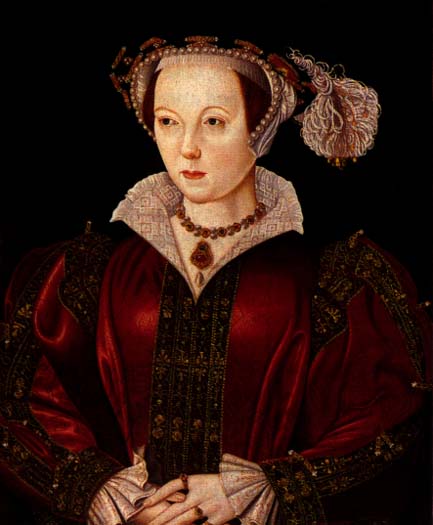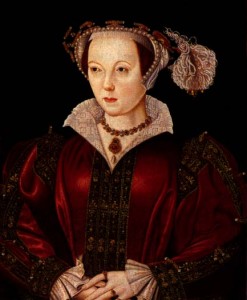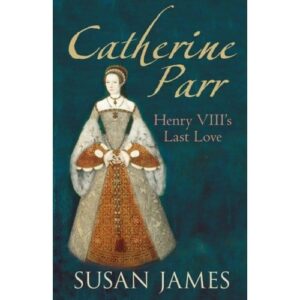

Catherine Parr will always be known as the queen who got away, the one who outlived the tyrannical King Henry VIII who had divorced two if his wives and beheaded another two.
But there is more to this often neglected Queen Consort’s story than that – here is a brief bio of Catherine Parr.
Catherine Parr’s Life
Catherine Parr was born in 1512 as the eldest daughter of Sir Thomas Parr, a descendant of Edward III. Her mother, Maud Green, had been a lady-in-waiting to Henry’s first wife, Catherine of Aragon, and so named her daughter after her beloved queen – how ironic!
Catherine’s father died when she was five years old and so her education was left to her mother, who educated Catherine to a high standard. Catherine was known for her love of learning and for her fluency in languages such as Latin, French and Italian.
Catherine is famous for being the most married English queen because she was married four times. Her first marriage to Edward Borough, son of Sir Thomas Borough and grandson of Edward, 2nd Baron Burgh, took place when she was 17 but was short-lived because he died in the winter/spring of 1532/1533, by April 1533 at the latest. Catherine married her second husband, John Neville 3rd Baron Latymer of Snape, North Yorkshire, in the summer of 1534. During this marriage, Catherine and her stepchildren by Neville were held hostage by the rebels involved in the Pilgrimage of Grace while the rebels forced her husband to join their side. Neville managed to get his wife and children freed and also managed to escape getting caught up with the rebellion and its repercussions. He died in March 1543.
In 1543, although Catherine had been widowed twice, she was only 31 and was an attractive lady. She soon caught the eye of Thomas Seymour, brother of Jane Seymour who had died in 1537. Catherine was very taken with Thomas but unfortunately Thomas could not compete with the King, who had also noticed Catherine at court. On July 12th 1543, Catherine Parr became the sixth and final wife of King Henry VIII in a small ceremony at Hampton Court Palace, after a mourning period for Catherine’s second husband.
 Catherine Parr as Queen
Catherine Parr as Queen
Catherine was an attractive and intelligent woman, who combined the intelligence and wit of Anne Boleyn with the prudence and diplomacy of Catherine of Aragon. She was what Henry needed after the heartbreak of the Catherine Howard marriage.
Catherine is known for reuniting Henry’s children with their father and bringing them back to court. Mary was won over by the fact that Catherine’s mother had been a good friend to her own mother, Catherine of Aragon, Edward was young enough not to remember his own mother and to see Catherine as his mother, and even the precocious Elizabeth was won over by Catherine’s warmth and intelligence, and this relationship would be a deep one which lasted until Catherine’s death. This reunification of the family was not just good for the children, it also presented a united front against Henry’s opponents.
The belief that Catherine Parr was a glorified nursemaid to the ageing and ill King is a myth. Catherine was an intelligent woman who was an accomplished author (“Prayers Stirring the Mind unto Heavenly Meditations” published in 1545) and Henry even trusted her to act as Regent while he was in France in 1544. She was also a patron of the arts.
Her achievements as Queen included bringing the royal family back together and influencing Henry to pass an act giving his daughters the right of succession to the throne. Catherine’s influence over Henry was resented by some at court and there was a conspiracy to remove her from “power”. In 1546, the conservative faction, including Stephen Gardiner and Thomas Wriothesley, used Catherine’s reformist beliefs against her and managed to persuade the King, who had just had an argument with Catherine over religion, to order her arrest. An arrest warrant was drawn up and it was even said that Henry would replace her with Catherine Willoughby, the Duchess of Suffolk and Catherine’s best friend. However, the quick-thinking Catherine Parr managed to save her head by pleading with Henry and persuading him that she had only argued with him in an attempt to help him forget about the pain caused by his leg ulcer and to learn from him. Henry forgave her.
Another Marriage
In January 1547, King Henry VIII died and Catherine caused a scandal by marrying former love, Thomas Seymour, just months after the King’s death. Catherine became guardian to Princess Elizabeth and Lady Jane Grey was a ward of Thomas, so both girls lived with them. After a scandal involving an alleged sexual relationship between Thomas Seymour and Princess Elizabeth ( he would stroke her buttocks and tickle her!), Elizabeth was sent away from the family home.
On August 30th 1548, Catherine Parr gave birth to her first child, a daughter Mary, at Sudeley Castle in Gloucestershire. She finally had a child of her own but just a few days later, like Jane Seymour, she died of puerperal fever (childbed fever). Catherine was buried at Sudeley Castle, where she still rests today. Her husband, Thomas Seymour, was executed for treason a year later and her daughter was taken by Catherine Willoughby, Duchess of Suffolk. Mary Seymour is believed to have died in early childhood as there are no records about her after the age of 2.
If you’re interested in learning more about Catherine Parr, Susan James has written a book devoted to her alone. Click on the book cover above to find out more about the US version or click here to see details of the UK version.
P.S. Some sources have Catherine Parr’s death as the 5th September and some as 7th September!
Last But Not Least
Read guest article by historian Linda Porter – “Last But Not Least: The Enduring Fascination of Catherine Parr”
Also, see:-
See the following articles:-